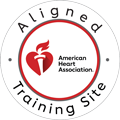Drowning is a major global public health issue, claiming hundreds of thousands of lives annually. Often leading to hypoxia, drowning can result in sudden cardiac arrest, a situation that demands immediate and effective intervention to improve the chances of survival. Despite advances in resuscitation techniques, cardiac arrest following drowning remains a complex challenge for healthcare professionals due to the interplay of hypoxia, hypothermia, and pulmonary complications.
This article aims to outline the critical steps in managing cardiac arrest after drowning, from the initial on-scene response to advanced medical interventions. These steps not only enhance survival rates but also reduce long-term complications, ensuring better outcomes for drowning victims.
Pathophysiology of Drowning and Cardiac Arrest
Understanding how drowning leads to cardiac arrest is key to managing it effectively. The primary mechanism in drowning-related cardiac arrest is hypoxia. As a person is submerged in water, their ability to breathe is compromised, leading to a lack of oxygen in the bloodstream. Hypoxia quickly affects vital organs, especially the brain and heart. Without oxygen, the heart becomes prone to arrhythmias like ventricular fibrillation or asystole, resulting in cardiac arrest.
Types of Drowning: Freshwater vs. Saltwater
The type of water can further influence the pathophysiology of drowning. Freshwater, due to its lower salt concentration, can rapidly enter the bloodstream through the lungs, diluting blood electrolytes and potentially leading to cardiac arrhythmias. Saltwater, on the other hand, pulls water from the bloodstream into the lungs, causing pulmonary edema, which impairs gas exchange. Despite these differences, the primary issue remains oxygen deprivation.
The Role of Hypothermia
One unique factor in drowning is hypothermia, especially in cold-water submersions. Hypothermia can have both protective and detrimental effects. On the one hand, cold water can slow the body’s metabolic rate, reducing the need for oxygen and potentially extending the window for successful resuscitation. On the other hand, severe hypothermia can exacerbate cardiac instability, complicating resuscitation efforts. Understanding the balance between these factors is crucial for medical teams working to revive a patient.
Call Us Now
Get the Best CPR Class in Kansas City Today!
Immediate Response at the Scene
When a drowning incident results in cardiac arrest, the immediate response by bystanders and rescuers is critical for improving the chances of survival. Each step taken in the early moments can significantly impact the outcome.
Scene Safety
Before approaching the victim, it is essential to ensure the scene is safe for both rescuers and the victim. Hazards such as unstable water conditions, strong currents, or potential obstacles should be assessed. Rescuers must avoid becoming victims themselves, as their safety is paramount to providing effective help.
Rescue Techniques
The method of extrication from the water can affect the victim’s condition. Rescuers should use techniques that minimize further injury and stress to the victim. For instance, using a floatation device or extending a pole can help retrieve the person without putting the rescuer at risk. The victim should be removed from the water as swiftly and safely as possible, prioritizing their airway and overall stability.
Assessment of the Victim
Once the victim is out of the water, a rapid assessment is necessary. This involves checking the Airway, Breathing, and Circulation (ABCs):
- Airway: Ensure the victim’s airway is clear of obstructions. Tilt the head back and lift the chin to open the airway, and if necessary, perform a quick sweep to remove any visible debris.
- Breathing: Look, listen, and feel for signs of breathing. If the victim is not breathing or only gasping, immediate action is required.
- Circulation: Check for a pulse. If no pulse is detected or if the victim is unresponsive and not breathing, initiate Cardiopulmonary Resuscitation (CPR) immediately.
Cardiopulmonary Resuscitation (CPR) in Drowning-Related Cardiac Arrest
Effective CPR is crucial in the management of cardiac arrest following drowning. This section highlights the specific considerations for performing CPR in these cases.
Initial Steps
Begin CPR as soon as possible if the victim is unresponsive and not breathing normally. The key components include chest compressions and rescue breaths. High-quality CPR improves the chances of restoring spontaneous circulation and increases survival rates.
Ventilation-Focused Resuscitation
In drowning victims, rescue breaths are particularly important. Due to the potential for pulmonary water retention, delivering breaths with appropriate volume and pressure helps clear the lungs and provide oxygen to the bloodstream. The recommended compression-to-ventilation ratio is typically 30:2 for adults, but this may be adjusted based on the rescuer’s training and the victim’s specific condition.
Compression vs. Ventilation Ratio
For drowning victims, the emphasis should be on providing effective ventilation along with compressions. High-quality chest compressions should be continuous and deep, with minimal interruptions. In cases where two rescuers are present, alternating duties can help maintain high-quality CPR.
Defibrillation and AED Use
If an Automated External Defibrillator (AED) is available, it should be used as soon as possible. The AED can help restore a normal heart rhythm if the cardiac arrest is due to a shockable rhythm, such as ventricular fibrillation. Follow the AED’s instructions carefully and ensure that chest compressions are paused only for the brief period required for analysis and defibrillation.
Advanced Life Support (ALS) for Drowning Victims
After initial CPR and stabilization at the scene, advanced life support (ALS) becomes crucial in managing drowning-related cardiac arrest. ALS involves more complex medical interventions and is typically administered in an emergency department or pre-hospital setting by trained professionals.
Airway Management
Effective airway management is essential, as drowning can lead to significant respiratory compromise. Advanced techniques may include:
- Endotracheal Intubation: This involves placing a tube into the trachea to secure the airway and ensure adequate ventilation. Intubation is particularly important if the victim remains unconscious or is unable to maintain their airway independently.
- Oxygen Delivery: Once the airway is secured, administering high-flow oxygen helps optimize oxygenation. Techniques such as bag-mask ventilation or mechanical ventilation may be employed to ensure sufficient oxygen delivery to the lungs.
Circulation Support
Maintaining adequate circulation and supporting cardiac function are critical:
- Medications: Drugs such as epinephrine can be administered to stimulate the heart and improve circulation. Anti-arrhythmic medications may also be used if specific cardiac rhythms are detected.
- IV Fluid Resuscitation: Intravenous fluids can help support blood pressure and restore blood volume, particularly if the victim is hypotensive or has signs of shock.
Therapeutic Hypothermia
Hypothermia can have both protective and detrimental effects on drowning victims:
- When Beneficial: Mild to moderate hypothermia can slow down cellular metabolism and reduce the oxygen demand, potentially improving survival chances. Inducing controlled hypothermia in a medical setting can help protect brain function.
- When Harmful: Severe hypothermia can complicate resuscitation efforts and increase the risk of cardiac arrhythmias. In such cases, warming measures should be employed cautiously, and careful monitoring is required.
Post-Resuscitation Care
Once the victim is stabilized, continued monitoring and care are essential:
- Continuous Monitoring: Vital signs, including heart rate, blood pressure, and oxygen levels, should be continuously monitored to assess the victim’s response to treatment.
- Addressing Complications: Potential complications such as pulmonary edema, metabolic abnormalities, or electrolyte imbalances need to be managed promptly.
- Neurological Assessment: Assessing the victim’s neurological status helps determine the extent of any brain injury and guides further treatment decisions.
Post-Resuscitation Care
Effective post-resuscitation care is critical for optimizing recovery and minimizing long-term complications. This phase involves several key components:
Monitoring and Stabilization
Ongoing assessment and stabilization of the victim’s condition are crucial. Key metrics to monitor include:
- Oxygen Saturation: Ensure adequate oxygen levels in the blood to support vital organ function.
- Cardiac Output: Evaluate the effectiveness of cardiac function and manage any abnormalities.
- Fluid Balance: Monitor and adjust fluid intake and output to prevent complications such as fluid overload or dehydration.
Management of Complications
Drowning can lead to various complications that require careful management:
- Pulmonary Edema: Treatment may include diuretics and supportive measures to manage fluid accumulation in the lungs.
- Brain Injury: Assess and manage potential brain injury due to prolonged hypoxia. This may involve imaging studies and supportive care.
Prognosis Predictors
Understanding the predictors of recovery or poor outcomes helps guide treatment:
- Time to Return of Spontaneous Circulation: The duration of cardiac arrest before successful resuscitation can impact prognosis.
- Neurological Status: Early signs of brain function recovery or deterioration provide important prognostic information.
Hospital and ICU Management
Following stabilization, the victim may require admission to an intensive care unit (ICU) for ongoing management:
Neurological Assessment
Early and frequent neurological assessments are crucial to determine the extent of any brain injury and guide rehabilitation efforts.
Ventilatory Support
Ongoing support may be required to ensure adequate ventilation, especially if the lungs are compromised.
Fluid Management and Infection Control
Careful management of fluids and infection prevention is essential to avoid complications such as acute respiratory distress syndrome (ARDS) and sepsis.
Key Factors for Success in Resuscitation
Rapid Identification of Cardiac Arrest
Quick recognition and intervention are essential for improving survival rates. Training in early recognition and CPR can save lives.
Effective Pre-Hospital Care
Pre-hospital care provided by emergency medical services (EMS) and bystanders significantly impacts outcomes. Ensuring that responders are well-trained and equipped is crucial.
Importance of Bystander CPR
Public education and training in CPR can empower individuals to act promptly and effectively in emergencies.
Use of Drowning-Specific Protocols
Implementing protocols tailored to the unique challenges of drowning can enhance the effectiveness of resuscitation efforts.
Conclusion
Managing cardiac arrest following drowning involves a multi-faceted approach, from immediate response to advanced care. By understanding the pathophysiology, implementing effective CPR, and providing comprehensive post-resuscitation care, medical professionals can significantly improve survival rates and outcomes. Enhancing public awareness and preparedness through education and training remains essential for optimizing the management of drowning-related emergencies.



